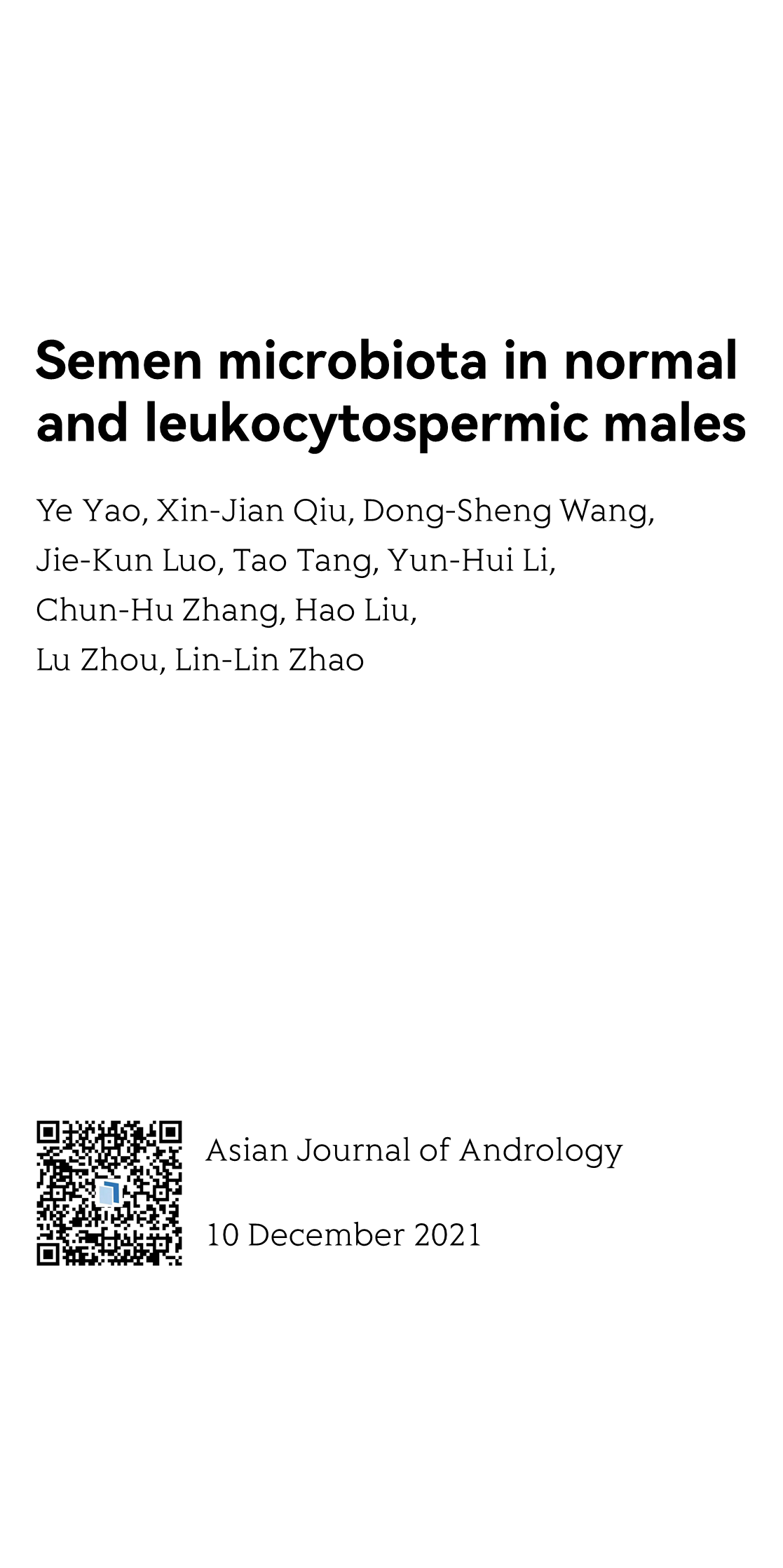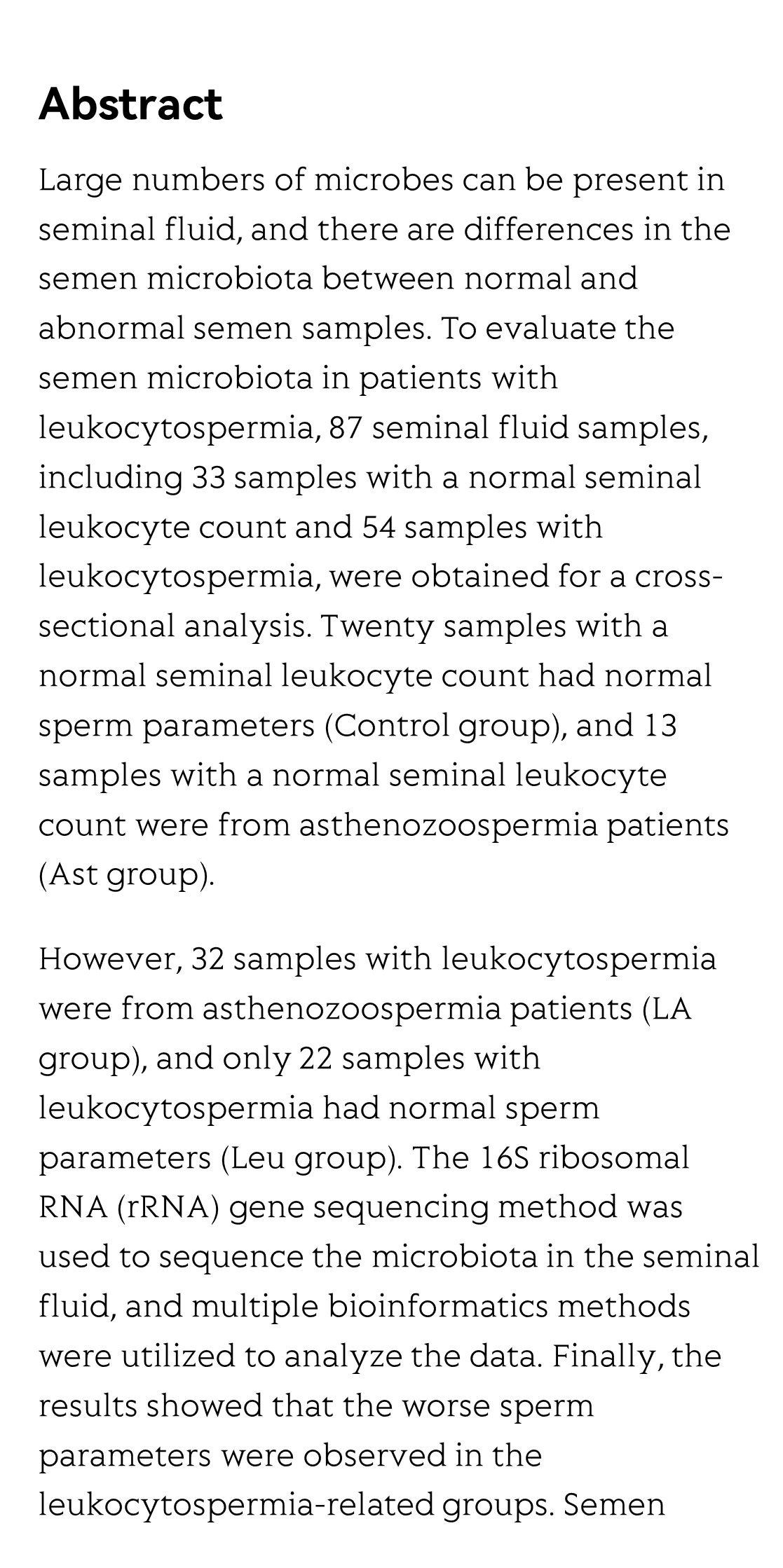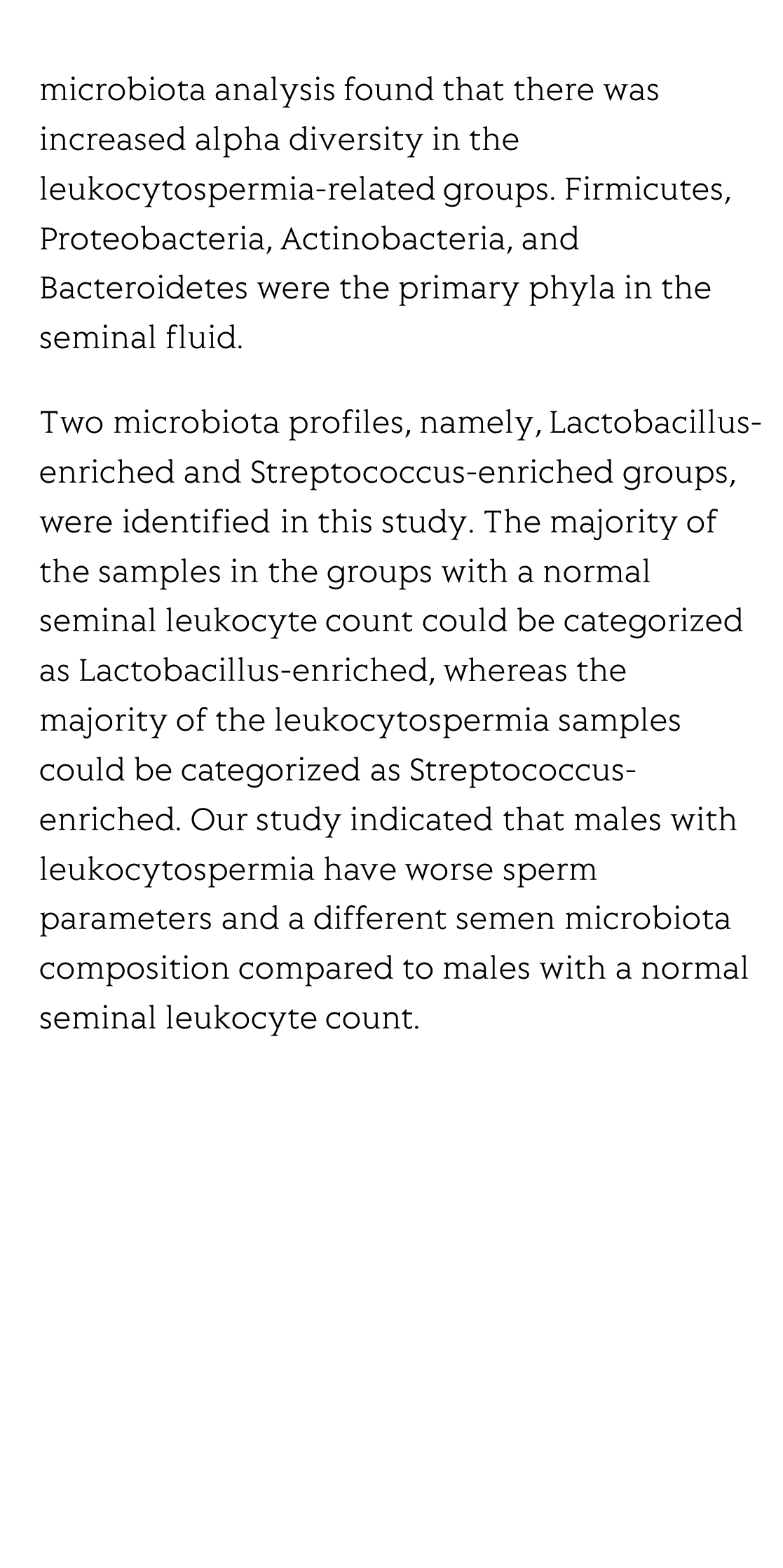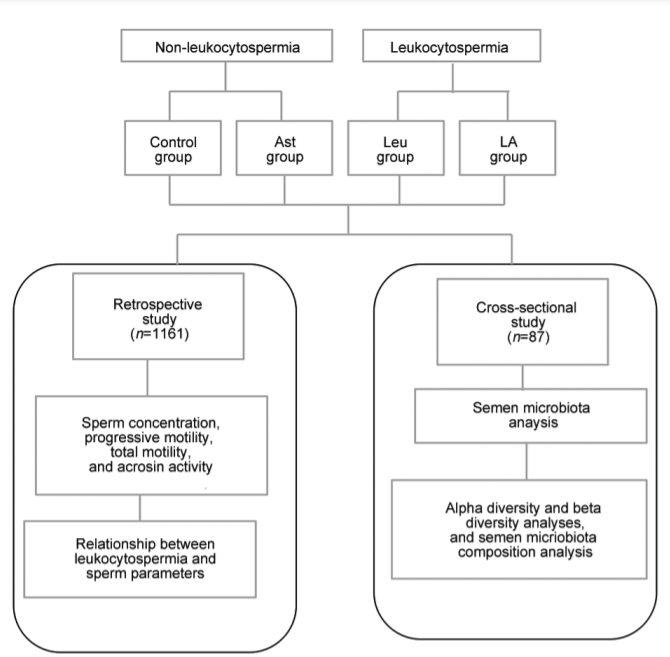(Peer-Reviewed) Semen microbiota in normal and leukocytospermic males
Ye Yao ¹ ² ³, Xin-Jian Qiu 邱新建 ², Dong-Sheng Wang 王东生 ², Jie-Kun Luo 罗杰坤 ², Tao Tang 唐涛 ², Yun-Hui Li 李云辉 ², Chun-Hu Zhang 张春虎 ², Hao Liu 刘浩 ⁴, Lu Zhou 周露 ², Lin-Lin Zhao 赵琳琳 ¹
¹ Health Management Center, The Third Xiangya Hospital, Central South University, Changsha 410013, China
中国 长沙 中南大学湘雅三医院健康管理中心
² Institute of Integrated Traditional Chinese and Western Medicine, Xiangya Hospital, Central South University, Changsha 410005, China
中国 长沙 中南大学湘雅医院中西医结合研究所
³ Department of Nephrology, Integrated Hospital of Traditional Chinese and Western Medicine, Southern Medical University, Guangzhou 510220, China
中国 广州 南方医科大学中西医结合医院肾内科
⁴ Department of Traditional Chinese Medicine, Guangdong Second Provincial General Hospital, Guangzhou 510220, China
中国 广州 广东省第二人民医院中医科
Abstract
Large numbers of microbes can be present in seminal fluid, and there are differences in the semen microbiota between normal and abnormal semen samples. To evaluate the semen microbiota in patients with leukocytospermia, 87 seminal fluid samples, including 33 samples with a normal seminal leukocyte count and 54 samples with leukocytospermia, were obtained for a cross-sectional analysis. Twenty samples with a normal seminal leukocyte count had normal sperm parameters (Control group), and 13 samples with a normal seminal leukocyte count were from asthenozoospermia patients (Ast group).
However, 32 samples with leukocytospermia were from asthenozoospermia patients (LA group), and only 22 samples with leukocytospermia had normal sperm parameters (Leu group). The 16S ribosomal RNA (rRNA) gene sequencing method was used to sequence the microbiota in the seminal fluid, and multiple bioinformatics methods were utilized to analyze the data. Finally, the results showed that the worse sperm parameters were observed in the leukocytospermia-related groups. Semen microbiota analysis found that there was increased alpha diversity in the leukocytospermia-related groups. Firmicutes, Proteobacteria, Actinobacteria, and Bacteroidetes were the primary phyla in the seminal fluid.
Two microbiota profiles, namely, Lactobacillus-enriched and Streptococcus-enriched groups, were identified in this study. The majority of the samples in the groups with a normal seminal leukocyte count could be categorized as Lactobacillus-enriched, whereas the majority of the leukocytospermia samples could be categorized as Streptococcus-enriched. Our study indicated that males with leukocytospermia have worse sperm parameters and a different semen microbiota composition compared to males with a normal seminal leukocyte count.
Flicker minimization in power-saving displays enabled by measurement of difference in flexoelectric coefficients and displacement-current in positive dielectric anisotropy liquid crystals
Junho Jung, HaYoung Jung, GyuRi Choi, HanByeol Park, Sun-Mi Park, Ki-Sun Kwon, Heui-Seok Jin, Dong-Jin Lee, Hoon Jeong, JeongKi Park, Byeong Koo Kim, Seung Hee Lee, MinSu Kim
Opto-Electronic Advances
2025-09-25
Dual-frequency angular-multiplexed fringe projection profilometry with deep learning: breaking hardware limits for ultra-high-speed 3D imaging
Wenwu Chen, Yifan Liu, Shijie Feng, Wei Yin, Jiaming Qian, Yixuan Li, Hang Zhang, Maciej Trusiak, Malgorzata Kujawinska, Qian Chen, Chao Zuo
Opto-Electronic Advances
2025-09-25







